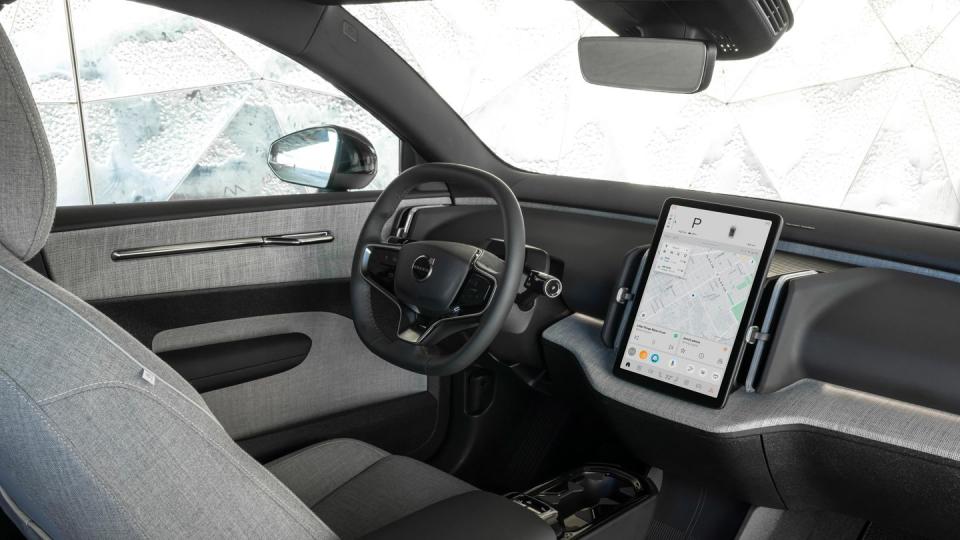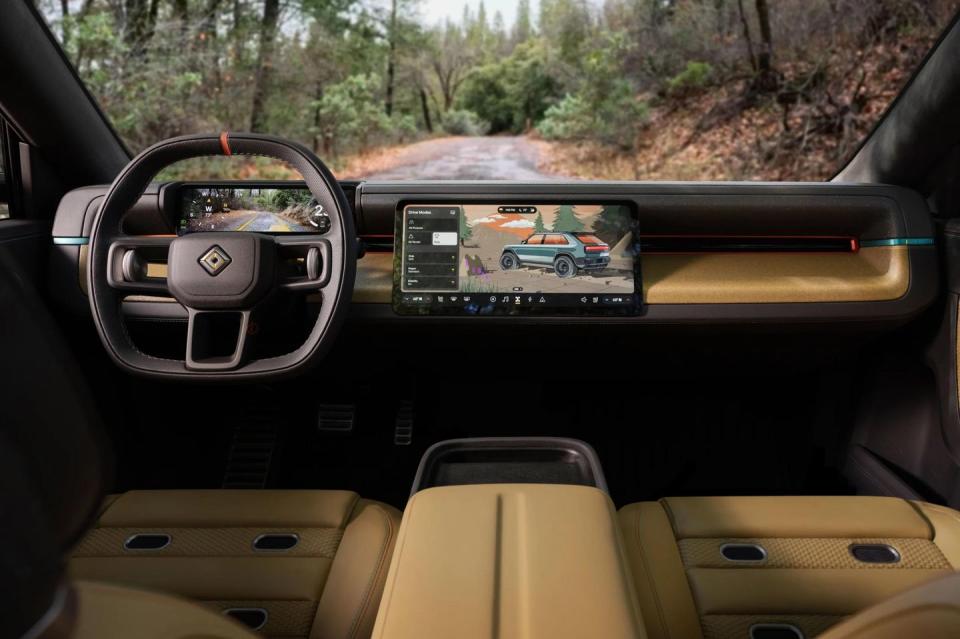European Auto Safety Watchdog Argues for Restoring Physical Buttons

Give us back our physical buttons, the team at the European New Car Assessment Program demands of automakers in a recent statement.
Targeting Tesla, the European safety watchdog is requesting that turn signals, hazard lights, and other safety-critical features remain in physical form.
Without regulatory power, the Euro NCAP suggestion will likely twist automakers' arms to comply for a coveted safety rating, though such changes won't be mandatory.
The interior you see above is the nightmare of the safety-hungry team at the European New Car Assessment Program. This economical Volvo EX30 relies on a central screen, and there are no buttons in sight beyond the few on the steering wheel itself. Imagine all the distractions!
At least that's how the safety watchdog group is framing its latest demand. As manufacturers like Tesla get rid of steering wheel stalks and automakers surge toward touchscreen controls, the European NCAP is not-so-nicely asking automakers to return their physical button control.

"The overuse of touchscreens is an industry-wide problem, with almost every vehicle maker moving key controls onto central touchscreens, obliging drivers to take their eyes off the road and raising the risk of distraction crashes," said Matthew Avery, Euro NCAP's director of strategic development.
Specifically, turn signals, hazard lights, windshield wipers, the horn, and other critical emergency features should remain in physical form, the organization says. In part, these sorts of details seem uniquely pointed at Tesla, which packages these functions within the steering wheel.
However, the proliferation of screens is a challenge faced by all manufacturers and one that is proven to distract drivers. Anecdotally, paging through menus to access infotainment systems or climate control functions feels downright dangerous while on the move, with some manufacturers making it more complex than others.
Notably, the statement by the watchdog organization does not discuss radio functions or climate control. Operating these functions in motion is certainly a safety issue, but the role of the Euro NCAP team is focused primarily on true prerequisites for roadworthiness.
Even so, the stern suggestion from the group will cover the entirety of the car's technology interfaces.
"New Euro NCAP tests due in 2026 will encourage manufacturers to use separate, physical controls for basic functions in an intuitive manner, limiting eyes-off-road time and therefore promoting safer driving," Avery said.

Similar to the Insurance Institute for Highway Safety here in the US, Euro NCAP is not a regulatory governing body, meaning it has no real power over the rules of road safety across the European Union. However, because many consumers rely on independent safety ratings from Europe's NCAP, automakers are likely listening closely.
Here in the US, the National Highway Traffic Safety Administration and the IIHS have yet to propose such a change.
Instead, domestic distracted driving rhetoric is often centered around cellphone use, with both agencies rolling out campaigns to curb texting and driving—although states such as Michigan have banned hand-held phone use behind the wheel. The IIHS even went one step further, suggesting that roadside cameras and telematics should be used to penalize distracted drivers.
However, the return to physical buttons is a change that would fall in line with the current safety goals of US regulators. While safety conditions for those inside a vehicle have improved exponentially in the last decade, the same isn't true for pedestrians and cyclists.
As a result, even the slow-moving apparatus that is the NHTSA was prompted to propose new pedestrian safety standards for modern vehicles. Spurred on by soaring pedestrian death rates (2021 represented the highest levels recorded in 40 years), it's possible that an increased focus on touchscreen use will surface in the US soon enough.
Besides audio volume, which buttons or knobs would you like to see return in physical form? Why? Please share your thoughts below.

 Yahoo Autos
Yahoo Autos 